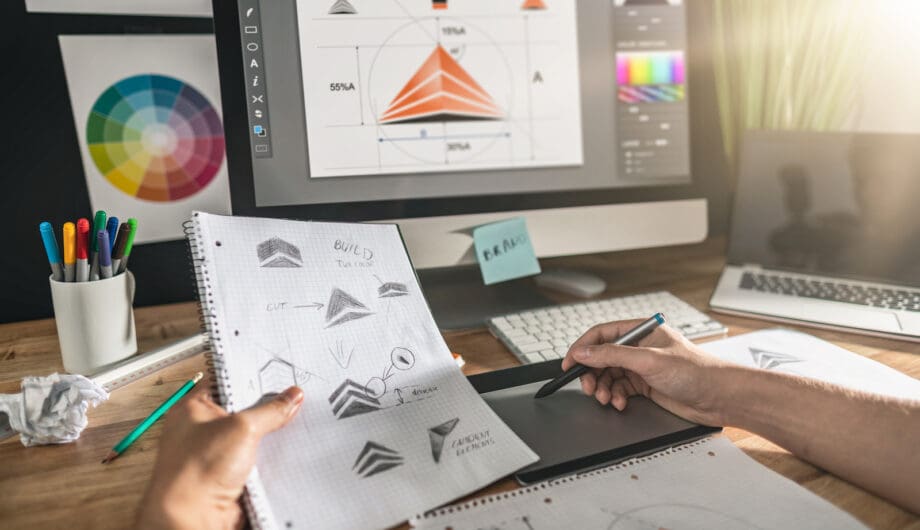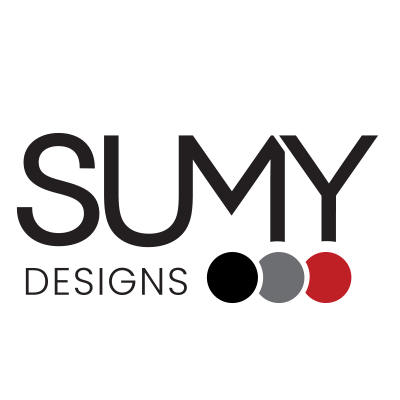
Your logo is your business calling card. It’s the first impression you make, and it needs to be versatile enough to work across various mediums, from your website to your social media profiles. This is where vector logos come in.
What is a Vector Logo?
Unlike raster images (think photographs or pixel-based graphics), vector logos are created using mathematical paths defined by points, lines, and curves. This allows them to be infinitely scalable without losing quality. No matter how large or small you need your logo, it will always maintain its crisp and clear appearance.
When it’s time to have a new logo designed, it’s important that it be a vector logo so you can blow it up for billboards and shrink it down for business cards and keep it looking sharp and clear in all settings.
Why Use Vector Logos?
Here are some key benefits of using vector logos:
- Scalability: As mentioned above, you can resize vector logos without any loss of quality, making them perfect for various applications, from business cards to billboards.
- Versatility: Vector logos can be easily edited and adapted to different color schemes or backgrounds, ensuring they always maintain your brand identity.
- Professionalism: Vector logos convey a sense of professionalism and polish, making a great first impression for your brand.
Vector Logo Software
While vector logos can be technically created in any program that supports vector graphics editing, there are a few industry-standard programs that are particularly popular for creating them:
- Adobe Illustrator: This industry leader is widely considered the most powerful and versatile vector graphics software. It offers a comprehensive set of features for creating and editing vector artwork, making it a favorite among professional designers.
- CorelDRAW: Another well-established option, CorelDRAW boasts a user-friendly interface and robust features for creating and manipulating vector graphics. It’s a popular choice for both beginners and experienced designers.
- Affinity Designer: This up-and-coming contender offers a compelling alternative to the established players. It boasts a powerful feature set with a focus on affordability and user-friendliness, making it a good choice for budget-conscious designers or those new to vector graphics.
- Inkscape: As a free and open-source vector graphics editor, Inkscape offers a surprisingly powerful set of features for creating and editing vector logos. While it may not have all the bells and whistles of the paid options, it’s a great option for those on a tight budget or seeking an open-source alternative.
What Formats Should You Receive Your Logo In?
When you commission a logo design, be sure you receive the final files in the following formats:
- EPS (Encapsulated PostScript): This is the industry-standard format for vector graphics and is compatible with most design software.
- AI (Adobe Illustrator Artwork): This format allows for easy editing and customization within Adobe Illustrator.
- SVG (Scalable Vector Graphics): This format is ideal for web use and can be easily scaled and embedded in websites.
- PNG (Portable Network Graphic): This lossless raster format is perfect for situations where transparency is needed, such as for logos with complex shapes or overlapping elements.
- JPG (Joint Photographic Experts Group): This widely used format is best for photographs or images with a lot of color variations, but not ideal for logos due to potential quality loss when resized.
- PDF (Portable Document Format): This versatile format can embed vector graphics alongside text and other elements, making it useful for various applications, including presentations and printable materials.
Reversed Logo
A reversed logo, also sometimes called an “inverse logo,” is not the same as a mirrored or backward version of your logo. Instead, it refers to a specific design variation where the logo colors are reversed. This typically involves:
- Changing the background color to the original logo color.
- Changing the logo colors to the original background color.
This creates a new version of the logo that can be used in specific situations where the standard logo might not work well. Here are some reasons why you might need a reversed logo:
- For use on dark backgrounds: If your logo has a light color scheme, it might blend in or become difficult to see if placed on a dark background. A reversed logo with a light background color would be more visible.
- For maintaining brand consistency on photos and videos: Putting your standard logo on top of photos or videos can sometimes create unwanted visual conflicts. A reversed logo can offer a visually integrated approach, especially on darker or colorful images.
- For artistic reasons: In some cases, a reversed logo can be used for creative purposes to create a different look and feel for your brand.
It’s important to note that not all logos need a reversed version. However, having one available can provide additional flexibility in how you use your brand identity across various mediums. Whether you need one depends on your specific branding needs and how you plan to utilize your logo in diverse contexts.
Where Can You Use Your Vector Logo?
The possibilities are endless! Here are some common applications:
- Websites and blogs: Embed your logo in your website header, footer, or social media buttons.
- Marketing materials: Use your logo on brochures, flyers, business cards, and other marketing materials.
- Social media profiles: Upload your logo as your profile picture or cover image.
- Newsletters: Include your logo in your email newsletters to maintain brand consistency.
- Signage: Display your logo on building signs, office signage, and other physical displays.
- Billboards: Showcase your logo on large-format billboards for maximum brand visibility.
- Product packaging: Include your logo on your product labels and packaging.
- Labels: Use your logo on custom labels for products, packaging, or promotional materials.
- Merchandise: Get your logo printed on t-shirts, hats, mugs, and other promotional items.
Social Media Logo Sizes:
If you are on social media, then you need to use your logo to brand your company across all platforms, and every platform has different sizes of images. To ensure your logo displays correctly across different social media platforms, here are the current recommended sizes:
- Facebook: Profile picture (180×180 pixels), cover photo (820×312 pixels)
- Twitter: Profile picture (400×400 pixels), header image (1500×500 pixels)
- Instagram: Profile picture (110×110 pixels)
- LinkedIn: Profile picture (400×400 pixels), company logo (300×300 pixels)
- TikTok: Profile picture (200×200 pixels)
- YouTube: Profile picture (800×800 pixels), channel banner (2560×1440 pixels)
- Threads by Instagram: Profile picture (110×110 pixels)
- Snapchat: Profile picture (300×300 pixels)
- Pinterest: Profile picture (165×165 pixels)
- Reddit: Profile picture (256×256 pixels), community banner (1920×100 pixels)
- Discord: Server icon (128×128 pixels)
- Twitch: Profile picture (96×96 pixels), banner image (900×400 pixels)
- Mastodon: Profile picture (400×400 pixels), header image (1500×400 pixels)
Various Examples:



By understanding vector logos and their benefits, you can ensure your brand identity is displayed consistently and professionally across all platforms. Remember, your logo is a valuable asset, so invest in a high-quality vector format that can grow with your business.
Amy Masson
Amy is the co-owner, developer, and website strategist for Sumy Designs. She's been making websites with WordPress since 2006 and is passionate about making sure websites are as functional as they are beautiful.
